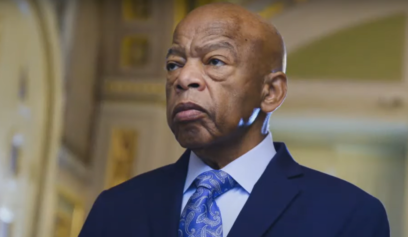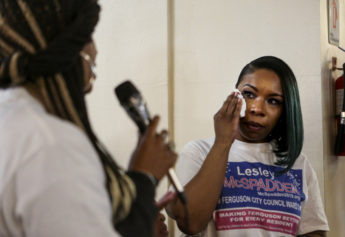South Africa and the United States are presently in the early stages of a militant mass Black movement. In South Africa, MPs affiliated with the Economic Freedom Fighters (EFF), a self-described revolutionary organization, disrupted parliament chanting “pay back the money” to senior officials in the ruling ANC government accused of corruption.
Similarly, in the US, militant activists commandeered the microphone at a march sponsored by the National Action Network to protest their exclusion. While both instances are portrayed as generational divides and disrespect to “the elders,” these are ideological disagreements that reflect a conflicting set of class interests and consciousness in the US and South Africa.
Ronald Walters in the Price of Racial Reconciliation and George Fredrickson in White Supremacy and Black Liberation compare and contrast the legal systems and Black Liberation Movement (BLM) in each country. Both countries are white settler states that had mass movements to eliminate racial apartheid. Although the fundamental problem is global capitalism, it expresses itself in three important ways: neocolonialism, neoliberalism, and militarism.
“Osagyefo” Kwame Nkrumah defined neocolonialism as a nation that has gained political freedom but is still economically dependent on external powers. Last year, Ronnie Kasrils, a national leader of the ANC and SACP, acknowledged that in the 1980s and ’90s ANC “gave too much away” during its negotiated settlement with the apartheid government. The negotiated settlement by the ANC left the land, mines, banks etc. in the hands of white monopoly capital. After 1994, the ANC promoted Black Economic Empowerment (BEE). BEE was a program that consolidated a Black capitalist class by establishing quotas in the economic sector. In essence, the ANC transitioned from a liberation movement to a neocolonial government.
In the US during the McCarthy era, Black liberal organizations such as the NAACP and the Urban League either assisted or remained silent when Black radicals like Paul Robeson and W.E.B. Dubois suffered political repression for their uncompromising stand on human rights. Without this “negotiated settlement,” the Black liberal demands of the Civil Rights Movement would not likely have been accepted. Then, in the 1960s, Richard Nixon supported government programs that reflected his slogan that “Black capitalism is Black Power.” This process helped to create the Black misleadership class that the emerging movement must confront.
Since the 1970s, there has been a neoliberal counterrevolution to undermine progressive and radical social movements through the promotion of policies such as trade liberalization, privatization, deregulation, and cutting of social services. The EFF has argued that the ANC abandoned the redistributive policies of the Freedom Charter for the neoliberal policies of GEAR and the NDP.
In the US context, the Black misleadership class remained loyal to the Democratic Party even as it transitioned to the neoliberal policies of the Democratic Leadership Council and Blue Dog Democrats. While the Democrats supported welfare reform, deregulation of radio airwaves in 1996 and repeal of the Glass Steegal Act, the Black political class said we must support the “lesser of two evils.” These and other neoliberal policies not only deepened class contradictions in African America but also the perceived need for police containment in both US and South Africa.
In the US and South Africa, the domestic police force has become militarized. The ANC government inherited the highly militarized apartheid era police force and a culture of anti-Black racism. Therefore, even with a majority Black government the police terrorism against Black people remains a major problem in the country. In order to combat the high crime rates caused by economic dislocation and social alienation, in 2009, the police commissioner once suggested the country adopt a “shoot to kill” policy. The most famous recent instance of police terrorism in South Africa was the case of 34 miners at Marikana murdered while protesting for higher wages.
Stateside, calls for law and order and the repeated refrain of “Black on Black” violence legitimated the militarization of domestic police. This militarization began in the 1960s, when the local police departments created SWAT teams in order to contain urban rebellions and radical Black organizations. And even though the CBC is well aware of the Black complaints of police terrorism in their districts, four-fifths voted against an amendment that would have halted Pentagon military transfers to U.S. police departments. Now, there is an incipient mass Black movement to challenge them and these colonial policies.
Although these two movements have several similarities, there are differences as well. A significant difference is political development. One reason being that the South African Communist Party played a critical role in the anti-apartheid movement and is one part of the Tripartite Alliance. This means the South African Left has a higher level of ideological and organizational development. For example, the EFF is a revolutionary socialist and Black consciousness organization with over 500,000 members and 25 members of parliament in just a little over a year of existence. At its National Assembly held Dec. 13-16 in Bloemfontein, the 33-year-old Julius Malema was elected President. The rank and file of the membership appears to be in their early twenties.
The protest movement that has emanated from Ferguson, MO, has captured the world’s attention from Venezuela to North Korea to Palestine. It has hearlded a new generation of radical Black organizers who before the murder of Mike Brown had never even attended a protest. In addition, the national discourse has undergone a seismic shift over the past few weeks due to their grassroots organizing. This movement is truly a game changer. But because of the political repression of McCarthyism and Cointelpro, this generation, my generation, has not had the same the level of political continuity and mentorship as our counterparts in South Africa. For example, Malema and other leaders in EFF received part of their political education in revolutionary Cuba.
The South African and US based BLM have a lot to teach each other. Unfortunately, at the moment, the two movements do not appear to be in conversation with one another. The EFF strategy of “economic emancipation in our lifetimes” and a national assembly to create a political program, point a way forward for the Black movement in the US. At this point, the radical sectors of the BLM must develop organization, strategy, and concrete objectives. It should plan a national assembly with four clear objectives:
1) Examine the historical weakness and strengths of the BLM
2) Assess the current state of the BLM
3) Create an independent Black organization (party, congress, united front etc)
4) Develop a five- to ten-year plan for the Black Community
The organizations that have been created over past five years to combat the prison system by young Black people (Dream Defenders, Millineal Activists United, #BlackLivesMatter, Students Against Mass Incarceration, Lost Voices etc.) and more established groups (MXGM, AAPRP, Uhuru Movement etc.) can make such a call. They have the organizers and clout do so. Hopefully, something is already in the works. But for now, in the words of the EFF ideologue Frantz Fanon, we “either must fulfill our mission, or betray it.”
Benjamin Woods is a PhD candidate at Howard University and co-founder of Students Against Mass Incarceration. He can be contacted at [email protected], or through his website FreeTheLand.


